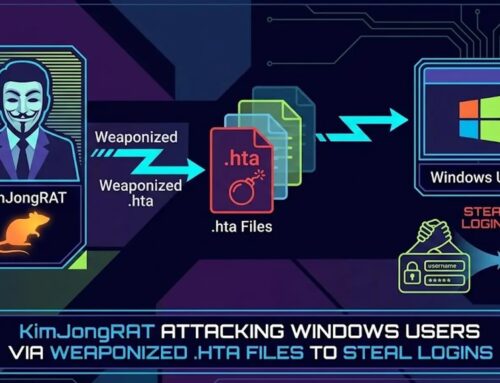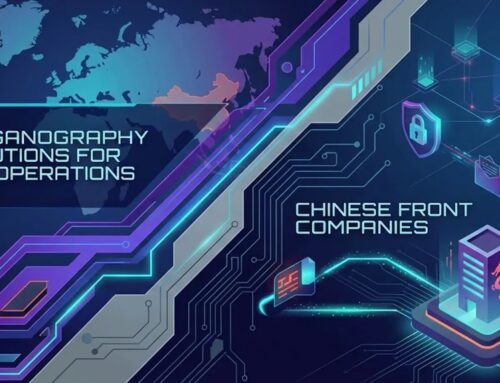
New Hacker Alliance Trinity of Chaos Leaked 39 Companies Data Including Google, CISCO and Others
The cybersecurity landscape has been rocked by the emergence of a new, formidable threat: the Trinity of Chaos. This sophisticated hacker alliance has launched a data leak site, exposing sensitive information from 39 major corporations, including tech giants like Google and networking infrastructure leader Cisco. This incident signifies a pivotal shift in cybercriminal operations, marking a significant evolution in their organization and tactics. Security analysts worldwide are now grappling with the implications of this new, highly organized ransomware collective.
The Rise of the Trinity of Chaos
The Trinity of Chaos is not just another ransomware group; it represents a convergence of notorious cybercriminal entities. Intelligence points to its formation from members of the infamous Lapsus$, Scattered Spider, and ShinyHunters groups. This alliance combines the raw extortion power of Lapsus$, the intricate social engineering tactics of Scattered Spider, and the data exfiltration expertise of ShinyHunters. Such a consolidation of talent and resources creates a threat actor with unparalleled capabilities, capable of executing complex attacks against high-value targets. Their recent data leak operation underscores the enhanced danger they pose to global enterprise security.
Targeted Organizations and Data Breach Impact
The scope of the Trinity of Chaos’s attack is alarming. With 39 companies compromised, the ripple effect across industries is substantial. The inclusion of Google and Cisco among the leaked entities highlights the group’s audacious nature and their ability to bypass sophisticated security measures. While specific details of the leaked data are still emerging, such attacks typically involve:
- Proprietary source code: Exposing intellectual property and potentially critical vulnerabilities.
- Customer data: Leading to privacy breaches, identity theft, and regulatory fines.
- Employee records: Enabling further social engineering attacks and insider threats.
- Financial documents: Revealing sensitive corporate financial information.
The economic and reputational damage to these organizations will be severe, underscoring the urgent need for enhanced cybersecurity resilience.
Advanced Tactics and Operational Evolution
The synergy between Lapsus$, Scattered Spider, and ShinyHunters within the Trinity of Chaos suggests a multi-pronged attack strategy:
- Advanced Social Engineering: Leveraging Scattered Spider’s proficiency in manipulating individuals to gain initial access, often bypassing strong technical controls.
- Ransomware Deployment: Utilizing established ransomware techniques, likely from the Lapsus$ playbook, to encrypt systems and demand payment.
- Large-Scale Data Exfiltration: Employing ShinyHunters’ expertise to quickly and efficiently steal vast quantities of sensitive data before or during a ransomware event, increasing leverage for extortion.
- Data Leak Sites: Operating sophisticated infrastructure to publicly shame victims and increase pressure for ransom payments, as seen with their current leak site.
This integrated approach makes detection and defense significantly more challenging for targeted organizations.
Remediation Actions for Organizations
In light of this evolving threat, organizations must bolster their defenses and prepare for potential attacks from sophisticated collectives like the Trinity of Chaos. Proactive measures are paramount:
- Strengthen Access Control: Implement rigorous Multi-Factor Authentication (MFA) across all systems and services, especially for privileged accounts. Regularly audit access logs for anomalous activity.
- Employee Training and Awareness: Conduct frequent and realistic phishing and social engineering simulations to educate employees on common tactics used by groups like Scattered Spider.
- Patch Management: Maintain a robust patch management program to address known vulnerabilities promptly. While specific CVEs linked to this breach are not yet fully disclosed, a significant percentage of breaches exploit publicly known weaknesses. Always refer to official advisories for critical vulnerabilities like those indexed on CVE-2023-XXXXX (Note: This is a placeholder; specific CVEs would be inserted here if available).
- Endpoint Detection and Response (EDR): Deploy and configure EDR solutions to monitor endpoints for suspicious behavior, identify early indicators of compromise, and respond swiftly to threats.
- Network Segmentation: Implement strong network segmentation to limit the lateral movement of attackers within the network, containing potential breaches.
- Data Backup and Recovery: Ensure comprehensive, offline, and immutable backups of critical data are regularly performed and tested for rapid recovery in case of a successful ransomware attack.
- Incident Response Plan: Develop, document, and regularly test a detailed incident response plan, including communication strategies, forensic analysis procedures, and data recovery protocols.
- Threat Intelligence: Subscribe to and actively utilize reliable threat intelligence feeds to stay informed about emerging threats, TTPs (Tactics, Techniques, and Procedures) of groups like Trinity of Chaos, and Indicators of Compromise (IoCs).
The Future of Cyber Warfare
The emergence of the Trinity of Chaos signals a worrying trend towards larger, more coordinated cybercriminal alliances. This consolidation of expertise, resources, and influence poses an unprecedented challenge to global cybersecurity. Organizations must move beyond basic security practices and embrace a proactive, defense-in-depth strategy, continuously adapting to the evolving threat landscape. Collaboration between government agencies, cybersecurity firms, and private enterprises will be crucial in combating these highly organized and dangerous adversaries.




